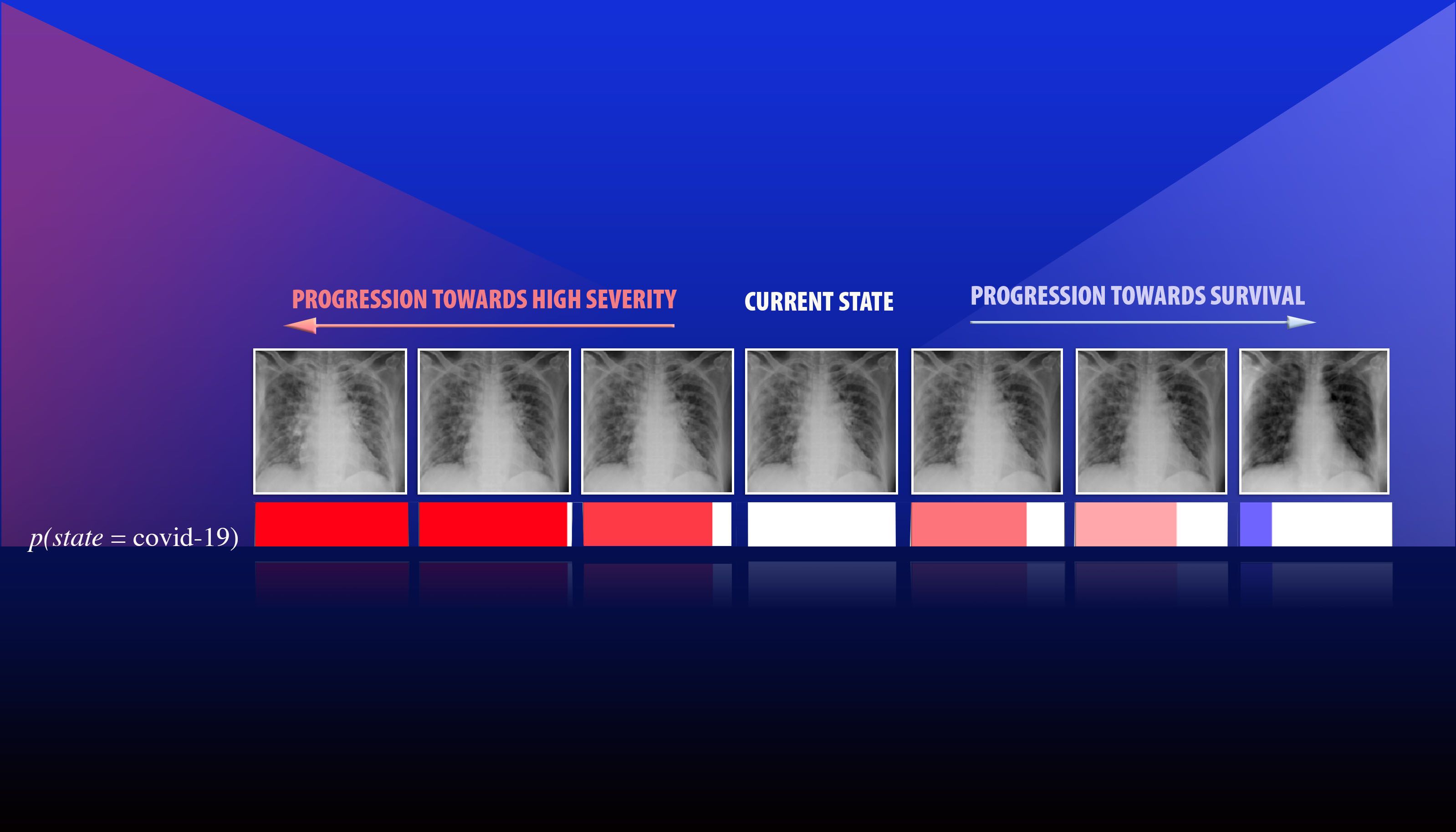After months of lockdown, it’s no surprise that people are itching to get out and about. But with ongoing debates about how and when to open Australia’s state and territory borders, it’s hard to know what to expect.
Month: May 2020
The most common organism in the oceans harbors a virus in its DNA
The most common organism in the world’s oceans — and possibly the whole planet — harbors a virus in its DNA. This virus may have helped it survive and outcompete other organisms.

New View on How Tissues Flow in the Embryo
Watching and measuring what happens in tissues inside the human embryo is currently not possible, and it’s difficult to do in mammalian models. Because humans and the fruit fly Drosophila share so many biological similarities, Columbia Engineering and Syracuse University researchers tackled this problem by focusing on fruit flies. The team reports today that they can predict when the tissue will begin to rapidly flow just by looking at cell shapes in the tissue.

Calibrated approach to AI and deep learning models could more reliably diagnose and treat disease
In a recent preprint (available through Cornell University’s open access website arXiv), a team led by a Lawrence Livermore National Laboratory computer scientist proposes a novel deep learning approach aimed at improving the reliability of classifier models designed for predicting disease types from diagnostic images, with an additional goal of enabling interpretability by a medical expert without sacrificing accuracy. The approach uses a concept called confidence calibration, which systematically adjusts the model’s predictions to match the human expert’s expectations in the real world.
Adoptive T-cell therapy ADP-A2M4 targeting MAGE-A4 shows early activity in patients with advanced solid tumors
MD Anderson-led Phase I trial of Adaptimmune T-cell receptor therapy sees confirmed responses in multiple cancer types
Combined cediranib and olaparib presents similar activity to standard of care treatment
Combined cediranib and olaparib presents similar activity to standard of care treatment for platinum-sensitive ovarian cancer
‘Single pixel’ vision in fish helps scientists understand how humans can spot tiny details
Recently discovered ‘single-pixel vision’ in fish could help researchers understand how humans are able to spot tiny details in their environment – like stars in the sky. In a paper published this week, researchers at the University of Sussex found…
Researchers conduct metabolite analysis of ALS patient blood plasma
Analysis could reveal, rule out, possible disease biomarkers
Better prepared for future crises
Recommendations from risk resarchers
Better outcomes, lower cost in first-ever oncology hospital at home evaluation
The evaluation of Huntsman Cancer Institute’s Huntsman at Home model was presented today at the American Society of Clinical Oncology Annual Meeting
Targeted therapy tepotinib for non-small cell lung cancer with MET exon 14 skipping mutation shows durable response
Phase II clinical trial shows 46.5% objective response rate
‘Black nitrogen’
Bayreuth researchers discover new high-pressure material and solve a puzzle of the periodic table
Study: Paper-thin gallium oxide transistor handles more than 8,000 volts
The advancement surpasses silicon and other mature technologies, and could help improve distances that electric cars, locomotives can travel
How toxic protein spreads in Alzheimer’s disease
Toxic versions of the protein tau are believed to cause death of neurons of the brain in Alzheimer’s disease. A new study published in Nature Communications shows that the spread of toxic tau in the human brain in elderly individuals…
Blood test as a potential new weapon in the fight to eliminate malaria
Development and validation of serological markers for detecting recent Plasmodium vivax infection
Nowzari receives funding for networked meta-population modeling and analysis for COVID-19
Cameron Nowzari, Assistant Professor, Electrical and Computer Engineering, received $150,000 from the National Science Foundation for a project in which he and his collaborators are developing numerical methods and mathematical models to provide complementary support to the epidemiologists worldwide who…
Government’s stimulus program to boost consumer spending
A case of discount shopping coupon scheme in Japan
Targeted therapy pralsetinib achieves high response rates in advanced cancers with RET gene fusions
MD Anderson-led Phase I/II ARROW trial finds RET inhibitor to be well-tolerated with durable antitumor activity
First cases of COVID-19 in New York City primarily from European and US sources
In New York City, the first confirmed COVID-19 cases arose mostly through untracked transmission of the virus from Europe and other parts of the United States, a new molecular epidemiology study of 84 patients reports. The results provide limited evidence…
Largest study of its kind of women in labor finds nitrous oxide safe, side effects rare
Additionally, women in labor who had a prior vaginal birth had low rates of converting to other pain management techniques such as epidural or opioids
About 30 Million Euros for excellent research
The German Research Foundation (DFG) has approved a new proposal for a collaborative research centre (CRC) under the leadership of the Institute for Experimental Cardiovascular Medicine (IEKM) at the University Heart Centre Freiburg · Bad Krozingen. The CRC 1425 “The…
Researchers identify healthcare data defects, create software for easier defect detection
Researchers at the University of Maryland, Baltimore County (UMBC) have developed a method to investigate the quality of healthcare data using a systematic approach, which is based on creating a taxonomy for data defects thorough literature review and examination of…
Nilotinib appears safe and affects biomarkers in Alzheimer’s disease clinical trial
WASHINGTON – A Georgetown University Medical Center clinical trial investigating the cancer drug nilotinib in people with Alzheimer’s disease finds that it is safe and well-tolerated, and researchers say the drug should be tested in a larger study to further…
DFG to fund three Collaborative Research Centres at TU Dresden
2D nanomaterials, fundamentals for a new way of constructing, and the control of one’s own will
Get ready for the latest science in heart failure
Six days of live sessions starting 5 June
New gut-brain link: How gut mucus could help treat brain disorders
Changes in gut mucus could be contributing to bacterial imbalance and exacerbating core symptoms of brain disorders like autism, Parkinson’s disease, Alzheimer’s and Multiple Sclerosis
How the coronavirus could be prevented from invading a host cell
UC Riverside-led study shows inhibiting two host cell proteases could help prevent COVID-19
Key grant positions USC as leader in dental and craniofacial tissue regeneration
THE STUDIES SEEM LIKE something straight out of science fiction. There’s one focused on using stem cells to regenerate skull bone for patients with skull defects. Another aims to develop a hydrogel patch that could reduce scarring and regenerate hair…
Neuropathogenesis, neurologic manifestations of coronaviruses
What The Study Did: Potential tissue targets and routes of entry of SARS-CoV-2 into the central nervous system and reported neurological complications of COVID-19 are identified in this narrative review. Authors: Serena Spudich, M.D., of the Yale University School of…
Trastuzumab achieves slight reduction in recurrence for women with HER2-positive DCIS
Trastuzumab achieves slight reduction in recurrence for women with HER2-positive ductal carcinoma in situ on NRG Oncology Trial NSABP B-43
Please see special handling
Clinicians must carefully balance risk of complications linked to SARS-CoV2 infection with risks of delaying surgery, but study suggests threshold for surgery should be raised compared to normal practice
NASA’s Commercial Crew Program Brings Extra Hands to Science on the Space Station
The International Space Station soon returns to a stable rotation of four US Operating Segment (USOS) crew members thanks to the first launch of NASA’s Commercial Crew Program (CCP).
Genestack signs multi-year agreement with AstraZeneca to implement Omics Data Manager
Genestack Ltd. today announced that its flagship multi-omics data catalogue, curation and integrative search product, Omics Data Manager (ODM), has been licensed and implemented by AstraZeneca
University of Washington launches online training for contact tracing to fight COVID-19
As businesses and public spaces reopen across the nation, the old-school public health detective work known as contact tracing is becoming a major component of the battle to contain the novel coronavirus that causes the deadly COVID-19 disease. It’s an…
Growing evidence that minority ethnic groups in England may be at higher risk of COVID-19
Previous pandemics have often disproportionately impacted ethnic minorities and socioeconomically disadvantaged populations. While early evidence suggests that the same may be occurring in the current SARS-CoV-2 pandemic, research into the subject remains limited. A team of researchers at the University…
Using brain imaging to demonstrate weaker neural suppression for those with autism
MINNEAPOLIS, MN- May 29, 2020 – According to the National Autism Association, people with autism spectrum disorder (ASD) may experience sensory hypersensitivity. A University of Minnesota Medical School researcher recently published an article in Nature Communications that illustrates why that…
Trastuzumab combined with trimodality treatment does not improve outcomes for patients
Trastuzumab combined with trimodality treatment does not improve outcomes for patients with HER2-overexpressing esophageal cancer on NRG Oncology trial
New streamlined assay can improve prenatal detection of alpha-thalassemia
A rapid and accurate test may allow clinical diagnosis and large-scale population screening for couples who may carry a mutation linked to alpha-thalassemia, reports The Journal of Molecular Diagnostics
When COVID-19 meets flu season
Pulmonologist outlines factors that could determine severity of ’20/’21 flu season
Venous thrombosis among critically ill patients with COVID-19
What The Study Did: A systematic assessment of deep vein thrombosis among patients in an intensive care unit in France with severe COVID-19 is reported in this case series. Authors: Tristan Morichau-Beauchant, M.D., of the Centre Cardiologique du Nord in Saint-Denis,…
Study: Public health campaigns can do better on cannabis harm reduction
UB, University of Michigan researchers surveyed cannabis enthusiasts about their knowledge of effective harm reduction strategies
Next frontier in bacterial engineering
New technique promises end-run around major barrier in genetic engineering of bacteria, setting stage for advances in medicine and beyond
Watcher’ tracks coronavirus in Cincinnati and beyond
Two University of Cincinnati students develop interactive dashboard to keep tabs on pandemic
Towards a climate neutral Europe: The land sector is key
In 2014, EU leaders agreed that all sectors should contribute to the European 2030 emission reduction target, including the land use sector, which did not count towards the achievement of the previous climate change mitigation goals. In 2018, this agreement…
Researchers from Syracuse University and SUNY ESF track COVID-19 in wastewater
The scalable program is being provided to half a dozen New York State counties, and growing
Research explores the impact of invasive grasses on South Texas landscapes
WESTMINSTER, Colorado – MAY 29, 2020 – Scientists writing for the journal Invasive Plant Science and Management say several exotic grass species once grown in South Texas for livestock forage and erosion control have expanded from the areas where they…
A roadmap for effective treatment of COVID-19
Study outlines key immunological factors underlying COVID-19 disease progression and proposes a range of drugs that may be repurposed to treat the disease
Taking a deep look into animals
Advances in neuroscience research and microscopy: a collaborative project driven by researchers of the Max Perutz Labs Vienna, a joint venture of the University of Vienna and the Medical University of Vienna, and the TU Wien (Vienna) allows researchers to…
RIT scientists develop method to help epidemiologists map spread of COVID-19
New research paper demonstrates how to more efficiently predict the COVID-19 outbreak
Researchers receive funding for remote occulter — Laser/Ao sub-system
Peter Plavchan, Assistant Professor, Physics and Astronomy, Shobita Satyapal, Professor, Physics and Astronomy, and Peter Pachowicz, Associate Professor, Electrical and Computer Engineering, received $6,200 from NASA’s Goddard Space Flight Center for a project in which they will develop science and…